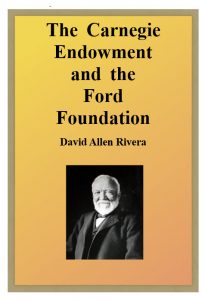Andrew Carnegie (1835-1919), photo on cover of this book, came to the United States as a poor immigrant from Scotland in 1848, and never became an American citizen. He built the Carnegie Steel Corporation, which he sold to J. P. Morgan for $500 million, who incorporated the company into the United States Steel Corporation in 1901, enabling Carnegie to retire and concentrate on his philanthropic activities.
In 1889, William Torrey Harris, the U.S. Commissioner of Education, told a high-ranking railroad official that the schools were being scientifically designed not to over educate children. He believed that the schools should alienate children from their parents and religion. In 1890, Carnegie wrote eleven essays which were published under the title The Gospel of Wealth. The underlying premise was that the free-enterprise system had been locked-up by men such as himself, J.P. Morgan, and John D. Rockefeller, and that they not only owned everything, but also controlled the government. His worry, was that subsequent generations would realise this, and work against them. His solution was to control the education system, and to create a direct relationship between the amount of education a person had, and how good of a job they could get. Therefore, this created a motivation for children to attend school, where they would be taught only what the social engineers of this country wanted them to know.
